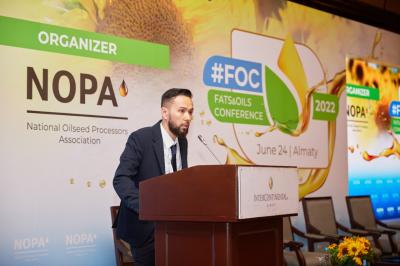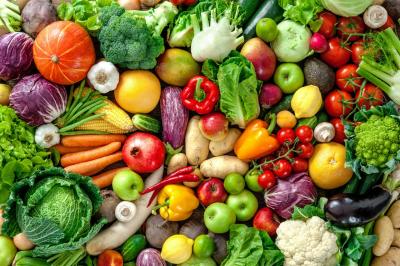
At the beginning of June, a new automated system of insurance for the agro-industrial complex came into effect in Kazakhstan, which makes crop protection completely voluntary for farmers. In addition, state support in the form of 50% subsidy of the cost of insurance policies is also provided.
Today, insurance products based on the soil moisture index - its lack and excess - have already been approved. In other words, a farmer can insure his crops against summer drought and autumn rains.
You can read more about the new system and its advantages in our previous materials.
We decided to find out how agricultural insurance works in Europe and the USA and how it differs from the methods implemented in our country. Aleksandr Artiushyn, agricultural insurance expert of Munich Re Group (Zurich, Switzerland), responded to the request of the editorial staff of World of Nan website and gave a detailed interview on this subject.
 Could you please tell us how the agricultural insurance system is arranged in European countries?
Could you please tell us how the agricultural insurance system is arranged in European countries?
- Agroinsurance is an important element of agricultural production in European countries. It includes not only crop insurance, but also insurance of farm animals, greenhouses, plantations and aquaculture. In most European countries, government support plays an important role in the development of agricultural insurance, namely subsidizing part of farmers' expenses for insuring their crops. The largest in terms of insurance premiums are the agroinsurance systems in Spain, which was the first European country to introduce multi-risk crop insurance subsidies more than 40 years ago, France and Italy. Thanks to government support, farmers can afford programs with a high degree of protection, and their insurance costs, in the long run, may be on average even less than the benefits they can receive in the event of an insured event.
In countries where only commercial insurance products are available, premiums are significantly lower and the penetration of agricultural insurance is lower. In countries where the products only cover a few risks, such as hail or fire, the volume of agricultural insurance is also relatively small. It is important to note that with proper structuring and implementation of insurance cover, insurance allows agricultural producers not only to ensure predictability and stability of business, but also often improves their ability to attract financing.
How effective are the insurance systems of European countries? What specific features can you highlight?
- Efficient operation of agricultural insurance system depends on a number of factors. Formation and development of agrarian insurance system often depend on the structure of agriculture in a country. For example, traditional insurance, which provides for the assessment of losses of the insurer in the field by a detailed damage analysis by a qualified specialist, is more effective if the farmer cultivates, for example, ten or fifty hectares of arable land. What if the farmer cultivates thousands, tens or even hundreds of thousands of hectares? In this case, from the perspective of simplicity of administration, speed of damage assessment and transparency of resolution, index solutions become the most optimal.
In order to determine losses, index solutions use independent data, the changes of which are well related to the farmer's yield, for example, official data on yield statistics for those regions where the farmer works, information on weather (rainfall, temperature), and vegetation or moisture reserves in soil. In addition, such index solutions can be structured to be more relevant to a particular company, for example, to take into account its diversification (including in the formation of insurance costs), as well as investments in agricultural technology, which may not yet have been fully taken into account in its historical yields.
That is why an important trend we are currently seeing in Europe is the expansion of the range of insurance solutions for agricultural producers. In particular, the emergence and distribution of new index solutions that complement current programs and allow you to insure risks that, as previously thought, could not be insured. For example, thanks to parametric solutions, even those companies that are not agricultural producers themselves, but depend on the volume of agricultural products, such as processors of agricultural products, can insure their income.
In addition, the development of digital technologies allows to automate and make the process of purchasing index insurance coverage very simple, as it usually does not provide for mandatory field visits and periodic visits of specialists to monitor the current state of crops.
It is also important to note that thanks to the use of index solutions, such as the weather index, it is possible to insure not only the reduction of production, but also the quality of agricultural products. For example, farmers can insure the risk of reduced flour quality of wheat in case of excessive rainfall during the harvest.
Can you name the current trends in agricultural insurance development in Europe? How will this sector change in the future?
- More and more countries in Europe are now considering expanding insurance subsidy programs to include specific index solutions, such as the French pasture insurance on the vegetation index, which measures how green the biomass is. Thus, among the main trends in agricultural insurance in Europe, as well as in the world in general, I would name the emergence of new, more efficient insurance solutions that better meet the requirements and wishes of customers, often parametric or mixed.
Major trends also include the digitalization of agricultural production, both in terms of farm management and the use of new technologies for risk management.
Can you give a couple of examples where insurance has helped farmers in Europe? Maybe there were some major disasters?
- Global warming is leading to severe climate change around the world, not only by increasing temperatures but also by increasing the frequency and intensity of extreme weather events. However, a number of countries are recording not only one-time events but also shifts in trends over the years. In some regions of Australia, for example, we see lower annual rainfall than before. Each year, serious weather events occur in a region of the world, usually resulting in a loss of income for farmers.
Last year, for example, a great many farmers in major agricultural regions in the United States were affected by heavy rainfall and even flooding during the planting season. While in Europe in recent years there have been serious droughts affecting farmers in France, Germany and even the Scandinavian countries, where in some regions the decline in grain yields was 60-70%. However, many fruit and vegetable farmers in northern Italy have been affected by atypical spring frosts this year. Many remember the serious drought in Russia in 2010, which halved yields in many regions. As you know, agricultural production in a number of regions of Kazakhstan is also a rather risky business. The spread of effective production insurance mechanisms is extremely important, not only to help producers achieve their planned financial results, but also to help them maintain business in the event of the most catastrophic weather disasters. Regardless of the country in question, lack of insurance often leads manufacturers to bankruptcy, especially if adverse weather events occur for several consecutive years. The development of agrarian insurance has not only an important economic role for each individual producer, but also helps to reduce social risks for the state, stabilize tax revenues, foreign exchange earnings, and ensure stable operation of the agrifood complex as a whole.
Can you tell us about the US agricultural insurance system? And also about other countries with the most efficient insurance systems.
- The U.S. agricultural insurance system is not only one of the oldest - it appeared in the thirties of last century, but today it is the largest in the world. To a large extent, the U.S. agricultural insurance system owes its success to the effective interaction between the government and business. Serious subsidies and a certain variety of subsidized programs, which are periodically reviewed and supplemented, allow U.S. farmers to successfully develop their businesses, despite the volatility of weather and market prices. An important feature of the U.S. agricultural insurance system is that the most widely used insurance programs in the U.S. are those that do not cover crop yields, but farmer income. A farmer can get compensation from an insurance company even at an average yield, if the prices of agricultural products have significantly decreased.
Agricultural insurance systems in China (traditional multi-risk insurance) and India (weather indices) are based on several other principles, which in recent years, due to rapid growth, have firmly established themselves in the top three countries in terms of agricultural insurance volumes. These countries are united by the significant role of the state in promoting and supporting insurance. In addition, important criteria for successful operation of agrarian insurance system in a country are usually flexibility of the system and openness of the state to innovative approaches and diversity of insurance programs. It is rare that one product can meet the interests and needs of all market participants.
Equally important is effective competition, including the involvement in the development and implementation of new insurance products of several leading global agricultural insurance companies, which can share international experience and help integrate the most effective approaches, taking into account the specifics of the country and its agricultural sector.
Thank you for the interview!
P.S. Considering all the above, we can conclude that agricultural insurance in Kazakhstan is just at the beginning of its journey to become a multi-format and highly developed structure, but, given the transition to a voluntary form of insurance with substantial government support, the steps that have been taken can be called as right.
Of course, in our country there are not so many insurance products yet, the market is still "raw", the involvement of producers is quite low, but the state has set a benchmark and created, as it seems to us, the necessary conditions for independent development of this sector. It will be possible to make estimations in this respect only after a year or two, but for now, the only thing left is to wish farmers to avoid force majeure situations as much as possible.






































 Could you please tell us how the agricultural insurance system is arranged in European countries?
Could you please tell us how the agricultural insurance system is arranged in European countries?





Обсуждение